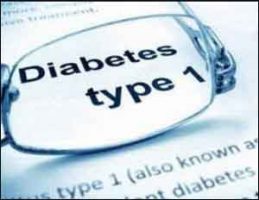- Home
- Editorial
- News
- Practice Guidelines
- Anesthesiology Guidelines
- Cancer Guidelines
- Cardiac Sciences Guidelines
- Critical Care Guidelines
- Dentistry Guidelines
- Dermatology Guidelines
- Diabetes and Endo Guidelines
- Diagnostics Guidelines
- ENT Guidelines
- Featured Practice Guidelines
- Gastroenterology Guidelines
- Geriatrics Guidelines
- Medicine Guidelines
- Nephrology Guidelines
- Neurosciences Guidelines
- Obs and Gynae Guidelines
- Ophthalmology Guidelines
- Orthopaedics Guidelines
- Paediatrics Guidelines
- Psychiatry Guidelines
- Pulmonology Guidelines
- Radiology Guidelines
- Surgery Guidelines
- Urology Guidelines
CGM prevents extreme highs and lows of blood sugar in type 1 diabetes

LotRegular use of CGM prevents extreme highs and lows of blood sugar in type 1 diabetes, according to a study presented at the American Diabetes Association Scientific Sessions.
The consistent use of continuous glucose monitor (CGM) for the management of type 1 diabetes in children reduces episodes of extremely high blood sugar (hyperglycemia) and sudden low blood sugar levels (hypoglycemia). But the effect of technology on time within the range may be less significant.
Diabetes requires management 24 hours a day, seven days a week, 365 days of the year and presents numerous daily challenges, particularly for families of young children and for adolescents and young adults with type 1 diabetes (T1D). Therefore the management of type 1 diabetes in children is very challenging. The traditional method focuses on avoiding a sudden fall in blood sugar or hypoglycemia even at the expense of high blood sugar or hyperglycemia -- which is known to negatively impact brain function and structure in young children. Therefore, there arises a need for a paradigm shift to address both high and low blood sugar in such patients.
Linda DiMeglio, professor of paediatrics at the Indiana University School of Medicine, and colleagues recruited 143 children (mean age, 6 years; 50% girls; mean HbA1c, 8.2%) for the multicenter randomized controlled Strategies to Encourage New CGM Use in Early Childhood (SENCE) study. The participants were randomly assigned to wear a CGM and receive a behavioural intervention, wear CGM without the other intervention or perform blood glucose monitoring for 26 weeks.
Also Read: Rotavirus vaccination reduces risk of Type 1 Diabetes by half in children
Key findings of the study include:
- Those in the CGM and family intervention group had an average time in the range of 38% at baseline while the other two groups were at 41%.
- After 26 weeks, the CGM plus intervention group increased time to 42% while the CGM and blood glucose monitoring groups decreased to 40%; however, these differences both compared with baseline and compared between groups were not significant.
- When excluding visits prior to those at week 19 and week 26, the researchers did find that those with CGM and intervention had more time in range compared with those just using CGM (44% vs. 40%) and compared with those using blood glucose monitoring (39%).
- Before study initiation, those in the CGM plus intervention group spent a median of 3.9% of their time in a state of hypoglycemia compared with measures of 4.2% and 3.8% in the CGM and blood glucose monitoring groups, respectively.
- After 26 weeks, those using CGM with intervention lowered that proportion to 2.4% and those with CGM lowered it to 1.8%, whereas those using blood glucose monitoring increased time spent in hypoglycemia to 5%.
- The post-study differences in time in the range were significant when comparing the combined CGM groups with the blood glucose monitoring group.
- The blood glucose monitoring group also had more episodes of severe hypoglycemia compared with the other two groups combined (5 vs. 1), with DiMeglio further noting that hyperglycemia time was also reduced with CGM use.
Also Read: Temelimab -A promising disease-modifying therapy for patients with type 1 diabetes
“The decreases in time spent in glycemic extremes may be associated with some neurocognitive benefits so I think that’s a good thing,” DiMeglio said. “The fact that we were able to get families to wear these consistently over 6 months suggests potential successes of other interventions applying technology in very young children.”
“The inability to improve the time in range and HbA1c means that we have to use different approaches,” DiMeglio said. “This includes potentially changing aspects of medical nutrition therapy, doing other educational diabetes management strategies, in working with those targeted behavioural interventions and applying behavioural interventions, and there is still promise for automated insulin delivery systems in these young children.”
For further reference log on to :
DiMeglio L, et al. Strategies to Enhance New Continuous Glucose Monitoring Use in Early Childhood (SENCE) —Primary Study Results. Presented at: American Diabetes Association 79th Scientific Sessions; June 7-11, 2019; San Francisco.

Disclaimer: This site is primarily intended for healthcare professionals. Any content/information on this website does not replace the advice of medical and/or health professionals and should not be construed as medical/diagnostic advice/endorsement or prescription. Use of this site is subject to our terms of use, privacy policy, advertisement policy. © 2020 Minerva Medical Treatment Pvt Ltd